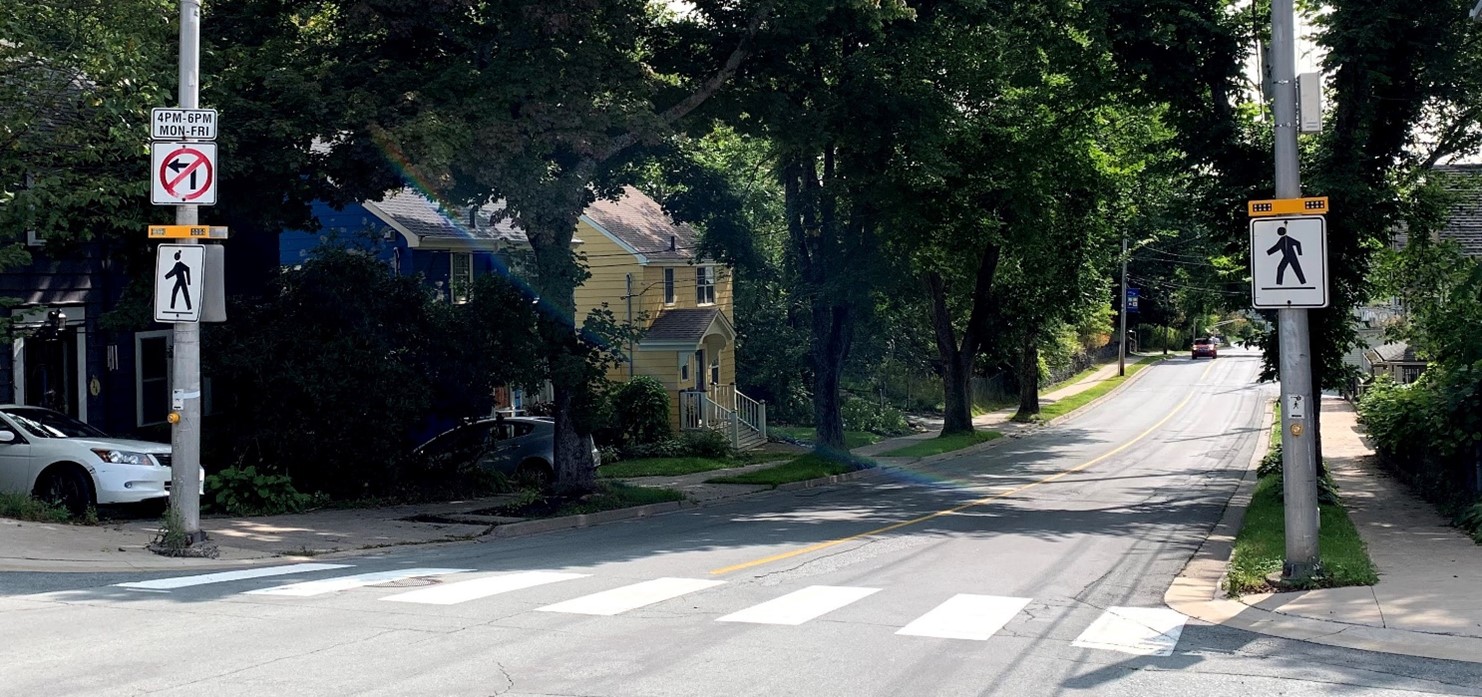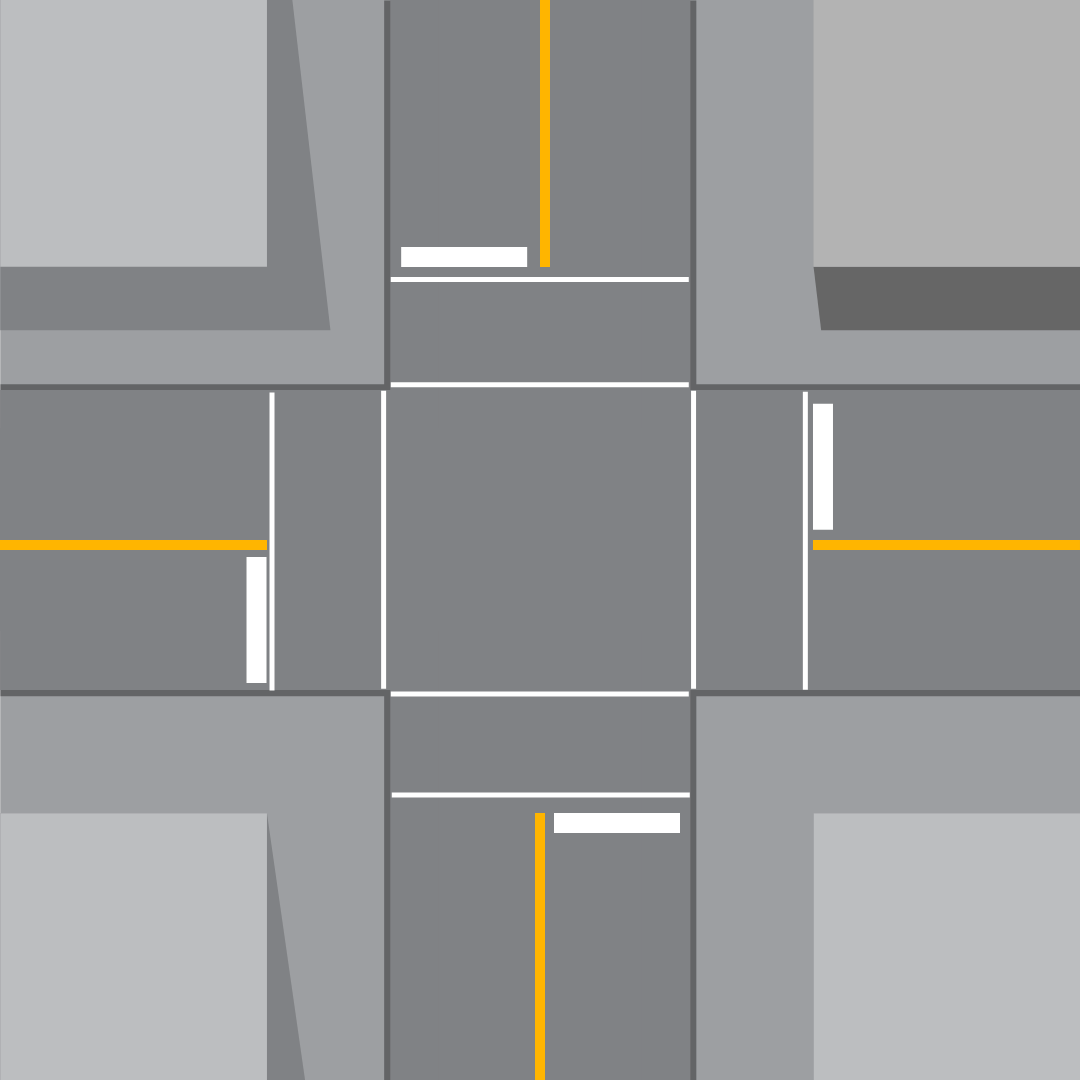**** HRM Media Release
In an effort to improve visibility of pedestrians at signalized intersections, HRM is adding zebra crosswalks at six locations as part of a pilot project. Zebra crosswalks are many horizontal lines instead of two parallel lines.
Crosswalks
As defined by the Nova Scotia Motor Vehicle Act, by legal definition, a crosswalk exists at every intersection whether marked or unmarked and by law a vehicle is required to stop for a pedestrian at a marked or unmarked crosswalk. Failure to yield to pedestrians is a violation of the Motor Vehicle Act. The best way to ensure safety is to wait for an adequate gap in traffic or until vehicles have come to a complete stop before entering the street.
Throughout the municipality a variety of crosswalk treatments are used, each where they are expected to be most effective. Because of the many requests for the marking of crosswalks, it has been necessary to establish criteria which provide an objective basis for evaluation as to where marked crosswalks are installed on roadways. Most jurisdictions in Canada use some form of criteria to determine which crosswalks will be marked and which will not.
Marked crosswalks and signs are useful in providing notification to drivers that pedestrians are likely to be encountered at a particular location on a regular basis. Research suggests that overuse of marked crosswalk devices can lead to reduced awareness, compliance, effectiveness, and safety. When crosswalk signs and markings are used sparingly, individual locations are more conspicuous. Over-saturating the streets with crosswalk devices would reduce their significance greatly.
Crosswalk Tips:
- Crosswalks exist on all legs of an intersection, whether marked or unmarked
- Slow down and scan the street and sidewalk when approaching crosswalks and intersections.
- Whether you’re walking, cycling, rolling, or driving, avoid all distractions when entering a crosswalk. Ensure you are seen, and your intentions understood.
- It’s the law to use the overhead flashing light at crosswalks. Make sure to press the button where it is available.
- Remember that you cannot stop or park a vehicle within five metres of a crosswalk.
- Drivers must yield to pedestrians waiting to cross or when they’re already in a crosswalk.
- Turning vehicles at signalized intersections must yield to pedestrians lawfully in the crosswalk. Pedestrians continue to have the right of way as they finish their crossing during the flashing don’t walk phase.
Marked Crosswalks
Marked crosswalks are located at:
- Intersections where there is potential for increased conflict between vehicular and pedestrian movements;
- Desired pedestrian connections with high pedestrian volumes;
- Where the best place to cross may not be obvious to pedestrians.
We use the Transportation Association of Canada (TAC) Pedestrian Crossing Control Guidelines to determine where and how marked crosswalks are appropriately installed.
There are various types of marked crosswalks and each is utilized in certain scenarios only based on factors such as road width, vehicle travel speeds and vehicle volumes.
RA-5 with Flashing Beacon
RA-5 crosswalks are pedestrian activated crosswalk treatment systems which consist of overhead and side mounted amber flashing beacons, additional downlighting, side mounted pedestrian crosswalk signs and zebra crosswalk markings.
Rectangular Rapid Flashing Beacons (RRFB)
RRFBs are pedestrian activated crosswalk treatment systems which consist of two rapidly and alternately flashing rectangular amber beacons mounted above the side mounted pedestrian crossing signs.

Zebra Markings at Signalized Intersections
Crosswalks at traffic signals are typically marked with twin parallel white lines. A recent safety review of 10 intersections in HRM recommended the use of zebra crosswalks at select signalized intersections to address observed near-miss incidents and historical collision patterns between vehicles and pedestrians. Zebra crosswalk markings (or high-visibility crosswalk markings) at signalized intersections have the potential to improve pedestrian safety by enhancing the conspicuity of pedestrians.

A signalized intersection with twin white parallel lines

A signalized intersection with zebra markings
We’re rolling out a pilot program for zebra markings at signalized intersections in 2022. The pilot will install zebra markings at six intersections and evaluate the effectiveness:
- Lacewood Drive & Dunbrack Street
- Lacewood Drive & Parkland Drive
- Main Street & Major Street
- Oxford Street & Chebucto Road
- Oxford Street & Quinpool Road
- Portland Street & Eisener Blvd
Stop Controlled Intersections
Parallel line crosswalks are painted, if required, at a stop controlled intersection based on factors such as pedestrian flow, geometry, etc.
Unmarked Crosswalks
A crosswalk exists at every intersection whether marked or unmarked and drivers are required to stop for a pedestrian at a marked or unmarked crosswalk.



